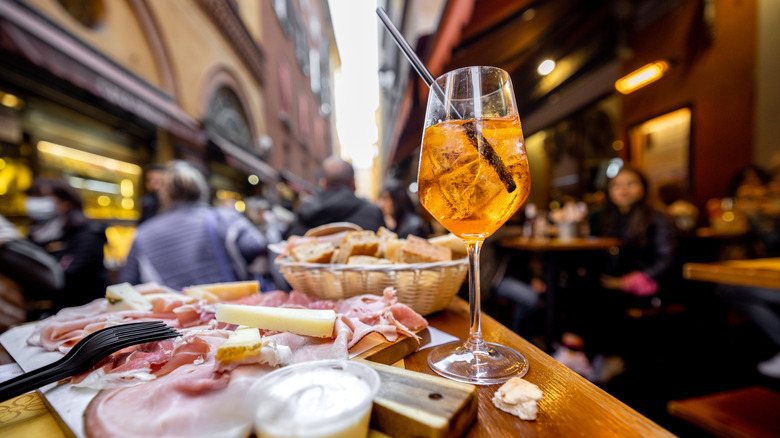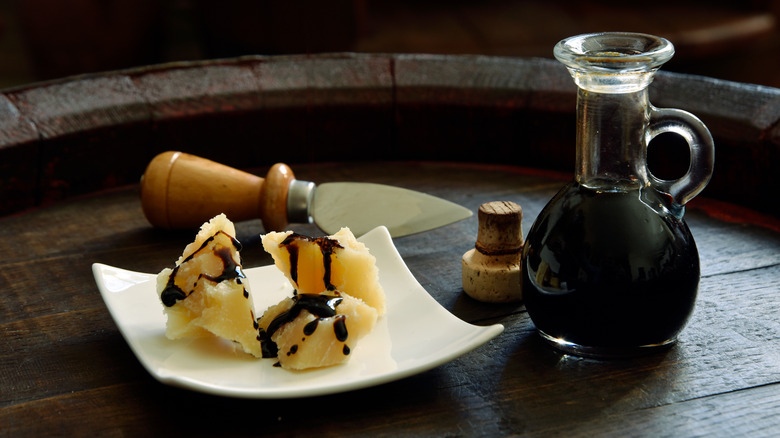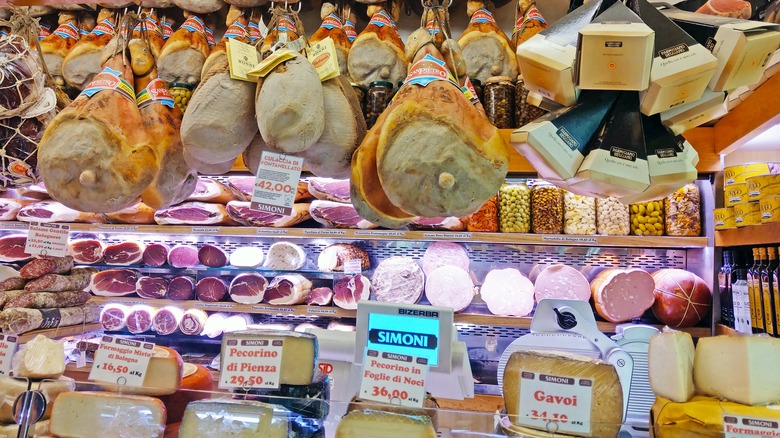Foodies Should Skip Crowded Rome, Florence, And Venice For These Three Underrated Cities
Italy takes the proverbial cake for exceptional cuisine; from pizzas baked to perfection in brick ovens to tender handmade pasta and delectably smooth gelato, the country is a foodie's paradise. While many first-time visitors believe Rome is the best spot to kick off an Italian vacation or flock to Italy's beautiful islands, the region of Emilia-Romagna is often overlooked. This is a shame considering how much the region has to offer, especially in the underrated cities of Bologna, Modena, and Parma.
Located in northern Italy, with Tuscany to the south and the sparkling Adriatic Sea to the east, the Emilia-Romagna region brags the origins of Ferrari, Parmesan cheese, and the oldest university in the Western world. While tourists often overlook this region in favor of crowded, heavy-hitters like Venice or Florence, the cities of Emilia-Romagna are drenched in history, from the elaborate mosaics of Ravenna to the robust intellectual record of Ferrara, dubbed the City of the Renaissance. For connoisseurs of Italian foodstuffs, this region cranks out classics like Prosciutto di Parma, balsamic vinegar, and Lambrusco wine, and is renowned for having some of the best cuisine in Italy. To fully experience "la dolce vita" and find the best places to eat in Italy add Emilia-Romagna's most beloved foodie cities, Bologna, Modena, and Parma, to your next Italian getaway for a delicious — and less crowded — vacation.
Devour street food and history in Bologna
Lovingly nicknamed "the learned," "the fat," and "the red" for its centuries-old university, gastronomy, and characteristic red-tiled roofs, Bologna is a must on any foodie's tour of Italy. Between strolling under the famed UNESCO-designated porticoes and touring the University of Bologna, the oldest continuously operating university in the world, sink your teeth into local delicacies from the Emilia-Romagna region.
Just a stone's throw from the Piazza Maggiore, Bologna's central meeting ground featuring the formidable half-brick-half-marble facade of the Basilica of San Petronio, is street food heaven. First-time visitors may be drawn to the Mercato di Mezzo, the city's oldest covered market, but skip the tourist crowds and head a block over to Via Pescherie Vecchie. During daylight hours, this narrow, cobbled street appears ordinary, with canopy-covered produce stands, giant legs of prosciutto di Parma suspended from crossbeams in butcher shops, and the occasional cafe. However, as the sun goes down, the street comes alive. Savor razor-thin slices of prosciutto and mortadella di Bologna on an expertly crafted tagliere di salumi e formaggi (meat and cheese board) from Salumeria Simoni Laboratorio. Next door at Zerocinquantello Osteria, dine on swoon-worthy lasagne and tagliatelle alla bolognese (flat ribbons of pasta with Bologna's traditional meat sauce) over a glass of wine.
If street food isn't your thing (although how could you go wrong in Italy?) check out Trattoria da Me. The rustic-chic interior will make diners feel right at home while tucking into classics like tortellini in brodo (pillows of pasta stuffed with meat bathed in broth), or cotoletta alla Bolognese (tender veal cutlet coated in crispy breadcrumbs).
Savor balsamic vinegar and fine dining in Modena
The city of Modena will ring a bell for balsamic vinegar lovers. Just 30 minutes by train from Bologna, Modena is another jewel in Emilia-Romagna's culinary crown. Foodies will want to begin their journey at the Mercato Albinelli. Just down the way from the striking white brick Modena Cathedral, Mercato Albinelli will delight the senses (and stomach). Vendors of all varieties populate the interior of this stunning Art Nouveau market, from rainbow-colored produce stalls to freshly caught fish resting on beds of ice to glass cases of freshly baked pastries. This is the perfect spot for a midday snack of gnocco fritto, a regional specialty consisting of puffy fried rectangles of dough served with cold meats and cheese.
For those seeking to dine in style, book a reservation at Osteria Francescana, the brainchild of chef Massimo Bottura and one of the most prestigious Italian restaurants in the world. Touting an impressive three Michelin stars, Bottura pushes the limits on his homeland's traditional cuisine, while maintaining the hallmark hospitality of Italian dining.
Finally, no visit to Modena would be complete without sampling the area's famed balsamic vinegar, created by boiling, fermenting, and aging grape must (juice). The syrupy, dark condiment is the perfect balance of savory and sweet, and an excellent addition to salads or even served over ice cream (for the ultimate Italian experience). Head over to the world's oldest balsamic vinegar producer, Acetaia Giusti founded in 1605, for a free tour of the museum and aging rooms, culminating with an informative tasting of the family's historic products.
Sample the world's best charcuterie in Parma
Parma is the mecca for charcuterie lovers, home to Italian staples like Parmigiano Reggiano and Prosciutto di Parma. For those looking to sample local delicacies, head over to Salumeria Garibaldi. Visited by Stanley Tucci in his series "Searching for Italy," Salumeria Garibaldi is just down the way from landmarks like the sumptuous Teatro Regio and expansive Palazzo della Pilotta, making this deli the perfect spot for a quick bite in between sight-seeing.
Savor paper-thin slices of Prosciutto di Parma, or Parma ham, created by curing the hind legs of pigs from the Parma province. This detailed process involves preserving the meat with a bit of sea salt, hanging and drying the cuts, followed by 12 months of aging, giving the meat its distinctive mild and tender profile. Finally, no foodie trip Parma is complete without sampling Parmigiano Reggiano, aka Parmesan cheese. This international staple is one of Italy's most celebrated treasures, in which cow's milk is cooked, molded into wheels, salted, and left to age for 12-24 months, resulting in the aromatic, nutty cheese we all know and love, and a hallmark of the Emilia-Romagna region.



